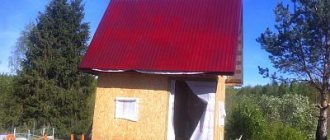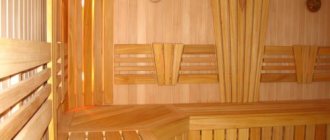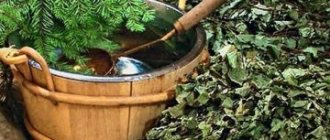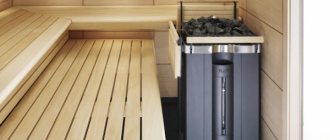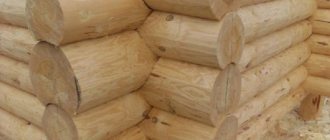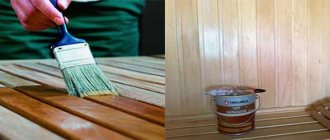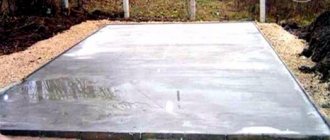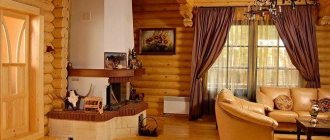Insulation of a bathhouse between the crowns refers to external thermal insulation, internal insulation of a bathhouse: floor, walls, ceiling, attic floor (if there is one) and roof - a separate article is devoted. And this is very important for a log bathhouse, since such bathhouses, as a rule, are not insulated from the inside.
The choice of material is quite difficult: there are a huge number of different products of both natural and artificial origin.
Therefore, in search of an answer to the question: “which inter-crown insulation is better for a bathhouse?” many spend a lot of time and effort.
Interventional insulation for a bathhouse: which one to choose?
As already mentioned, all insulation materials can be divided into two large groups:
- Thermal insulation based on natural materials;
- Synthetic insulating materials.
Natural
In general, we can say that natural materials have the undoubted advantage of being environmentally friendly, but at the same time they are very labor-intensive to install and are more susceptible to rot and parasites. They have also long been used for insulating baths and other buildings. The price of these materials is also attractive. Synthetic insulation is more versatile and easier to use.
Insulation materials made from natural plant fibers include:
- jute (including jute tow and jute felt);
- linen;
- combined options : flax wool and flax jute;
- moss (as the most traditional insulation for a log bathhouse).
Reference. Natural insulation also includes clay and its mixtures, which are often used for thermal insulation of ceilings, not roofs.
Jute
It is a very popular material that is produced in small rolls of tape. Its thickness ranges from 5 to 15 mm. It is characterized by high density and uniformity. This is especially evident after complete installation: the jute adheres even more, becoming resistant to moisture and wind. It is quite easy to install; you need to roll out the roll to the desired length and secure it (for example, with a construction stapler).
The disadvantages include sometimes the excessive coarseness of the fibers and low fracture resistance.
Linen
Linen is inferior to jute in ease of use, but is also in demand. It is believed that due to its ability to accept and release moisture, it allows the structure to “breathe”. It is softer and easier to take the required shape.
It is a hypoallergenic substance and has disinfectant properties.
By the way , the ability to pass water is a certain disadvantage of flax: from the point of view of moisture and wind protection, it is not very reliable. In addition, flax is susceptible to destruction by moths and other insects.
Combined options: flax wool and flax jute
When choosing combined materials, focus on the ratio of the amount of jute and flax in them. Depending on this, the material will have to a greater extent one or another of the above-described pros and cons. But, of course, combined materials can be called a good choice, since they will be more versatile and remain affordable for any budget.
Useful video
Look at the difference between jute and linen, according to an expert:
Moss (red moss, sphagnum, cuckoo flax)
It is a very common and traditional material that you can prepare yourself or purchase at a bargain price. It has bactericidal properties, but has a large number of disadvantages.
Negative features include:
- predisposition to drying out and spontaneous loss;
- the complexity of the caulking process;
- susceptible to destruction by insects and being pulled out by birds.
Based on sheep wool
A separate category is heat-insulating material based on sheep wool. Most often used in the construction of baths from profiled timber. It plays the role of insulation, moisture and wind protection. This is possible due to the ability of wool, like wood, to regulate humidity.
Another undoubted advantage is its durability: over time it does not lose its original volume.
Its disadvantages include high cost and the potential danger that moths may appear in such insulation.
Synthetic
Synthetic insulation materials include:
- thermal insulation tapes;
- combined materials.
The last two types appeared on the Russian market relatively recently. Tape material is attractive because it saves time on installation. This in turn significantly reduces the time required to build a bathhouse. Simultaneously with insulation, the tapes are able to remove moisture and play the role of wind protection. They are safe and hypoallergenic.
They are presented in a wide range depending on the parameters:
- – density (from 300 to 800 g per sq. m);
- – width (from 100 to 200 mm);
- – quantity (rolls from 10 to 50 lm).
Attention ! The question of their safety when exposed to high temperatures has not been fully studied.
Jute-flax
This insulation is a combined option and is made from natural fibers such as jute and flax. The result is an ideal insulation option that combines both the rigidity of jute and its resistance to rotting, as well as the elasticity of flax.
The width of the material, specially selected for caulking, will make the process as convenient as possible and will significantly speed up the entire insulation process.
As reviews from experienced craftsmen say, the material is perfect for caulking a bathhouse, since, unlike artificial materials, it perfectly allows moisture to pass through it. If you use synthetic insulation for a bathhouse, then, on the contrary, they will begin to accumulate moisture, and, as a result, the wood will begin to rot.
Insulation for a log bathhouse or for timber
For a log, a thicker layer of insulation (especially strip material) is taken, and for a bathhouse made of timber, a thickness of 8-10 mm is sufficient. If you use laminated veneer lumber, you can get by with a thickness of 5 mm. IMPORTANT! If there are gaps or other irregularities in the timber, the insulation is placed in two layers.
Materials based on plant fibers are perfect for logs, and roll products are ideal for timber.
It is advisable to complete the insulation of a bathhouse made of timber with finishing materials: clapboard, siding or block house. We recommend treating wooden finishing materials with special impregnations or oils.
It should be remembered that depending on the material from which the bathhouse is built, there are nuances of thermal insulation and recommendations regarding the materials used: insulation of walls made of wood, brick, blocks (especially foam concrete), frame walls requires special attention.
Useful video
Look at another professional’s opinion on the issue of “moss or jute”:
Brief instructions for installing jute insulation
You need to work with jute insulation in dry, windless weather.
There are several ways to install the material. So, for ordinary logs and laminated veneer lumber, the method without bending is used. You need to insulate a house made of planed beams by placing one edge of the jute tape under the other. To insulate buildings made from rounded and chopped logs, it is necessary to bend both edges of the insulation. In general, the installation diagram looks like this:
- We roll out the tape along the length of the log and fasten it with a construction stapler in increments of up to one meter.
- We make sure that the insulation does not protrude beyond the joint. Otherwise, moisture will get into the seam.
- We lay the material in the next beam. We cut off the excess or compact it inside the log house.
- After you have insulated the entire house, you need to apply caulk. A jute rope is suitable for this.
- If you want to drill a hole for a dowel in the insulation, do it manually so as not to violate its integrity.
Watch a video review of inter-crown jute insulation: Jute inter-crown insulation is a classic natural material for thermal insulation of buildings made of natural wood. It is environmentally friendly, durable, easy to use and perfectly protects against the cold. It is easy to work with and even a beginner can do it.
Plant fibers or tape material
Plant fibers are often more affordable in terms of cost, but they require more installation time.
Plant fibers are more environmentally friendly, but have a shorter service life compared to synthetic materials.
Reference. A separate article is devoted to foil materials used as insulation for ceilings and walls.
"Ancient" methods of insulation
You can also use simpler and long-used options. For example, use moss as insulation. Many species of this plant grow in nature, but only two varieties are best suited for insulating a wooden house:
- sphagnum - has a large amount of antiseptic substances. This feature allows you to reliably protect your home from the harmful effects of the environment;
- Kukushkin flax has less antiseptic effect. This moss is not laid completely dry, so its thermal insulation properties will be better.
Such insulation will help create a better microclimate in your home. This is created due to the aroma of the forest that the material emits. There will always be a pleasant atmosphere in your home.
Ordinary moss - sphagnum - can be used as inter-crown insulation.
The moss itself is environmentally friendly and does not cause allergies. But assembling it yourself is quite difficult. Moss grows in swamps and other damp places. In addition, each variety requires its own technology for collection and preparation for use. It is quite difficult to prepare it in the required quantities yourself, so this method of insulating the inter-crown space is rarely used today.
For your home, you can choose a simple tow. This material is made from various raw materials, it can be flax or hemp. But such insulation has one “bad” property: birds really like it. The fibers are easily separated from the main mass, which forces the seams to be repaired annually. In addition, tow absorbs moisture well and can rot.
Let's summarize: which interventional insulation is better for a bathhouse?
As you can see, the question about inter-crown insulation for a bathhouse, which one to choose, requires a personal decision. We've given you food for thought. The choice of interventional insulation for a bath should be based on individual needs, as well as preferences and real possibilities (financial and time).
Find out more about the choice of materials for building a bathhouse, about insulation and insulation:
- Choosing insulation for a steam room: both warm and environmentally friendly
- Basalt insulation for a bath or natural? What insulation for a bath is better? Review of the most popular

